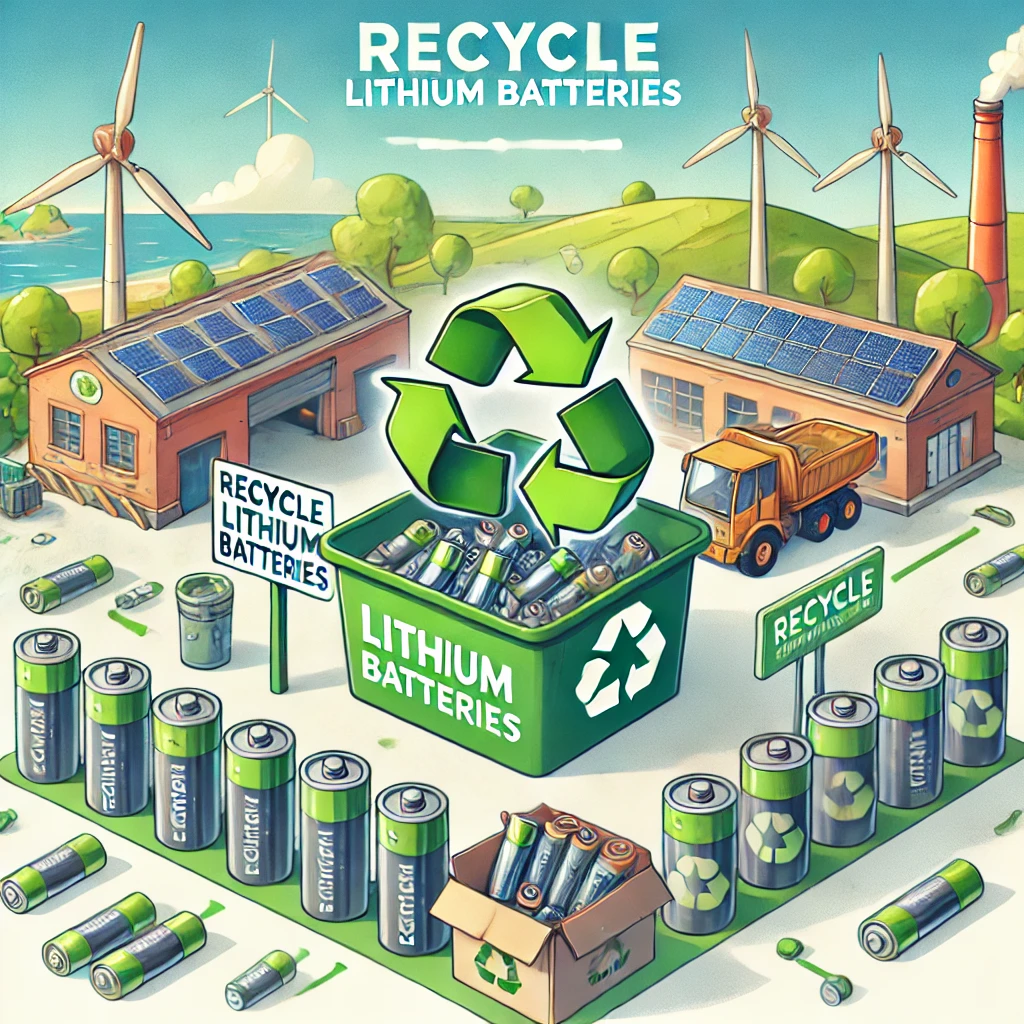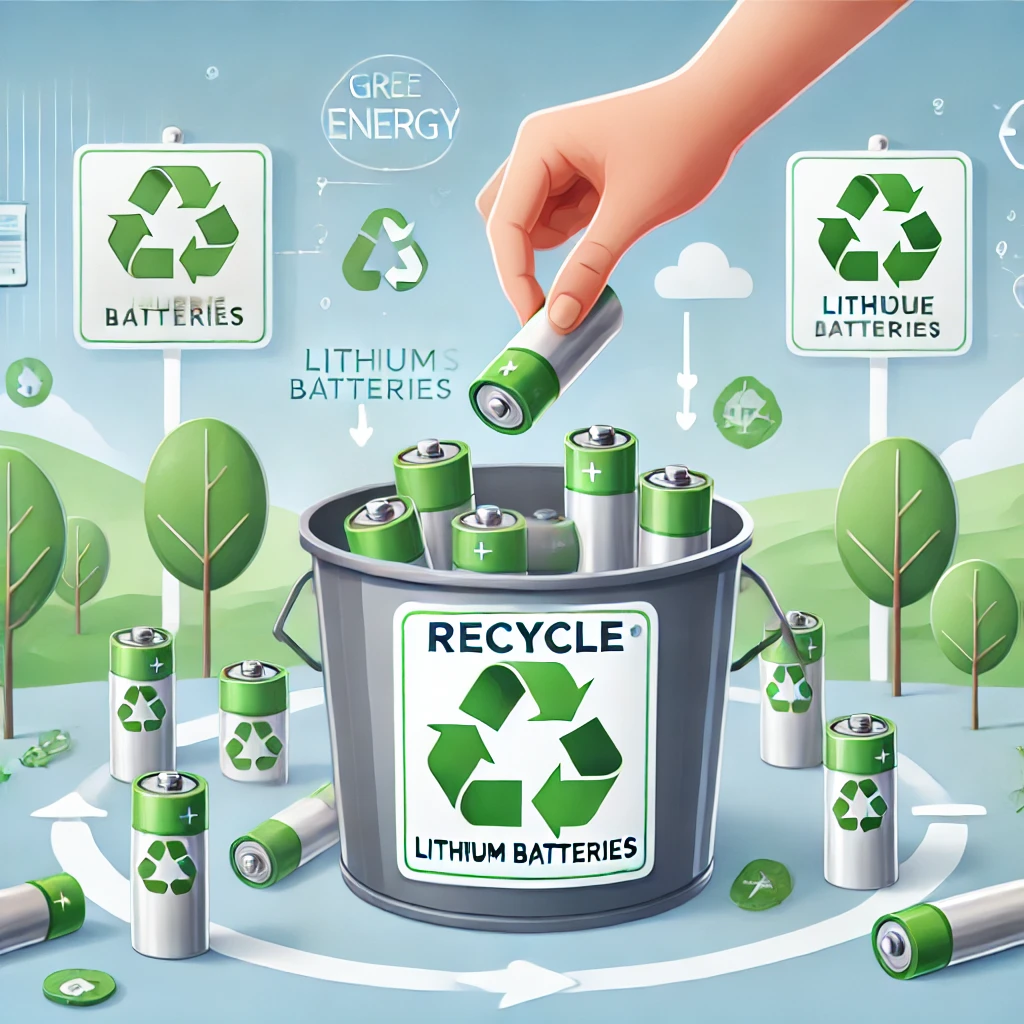Did you know that every year, millions of lithium batteries end up in landfills, releasing harmful chemicals into the environment?
Lithium batteries power our phones, laptops, and even electric cars, but what happens when they stop working? Many people aren’t sure if they should throw them away, try to reuse them, or take them to a recycling facility. Improper disposal not only wastes valuable materials but also creates a risk to our planet.
In this post, we’ll explain why recycling lithium batteries is essential, how it helps protect the environment, and what you can do to make a difference. By the end, you’ll understand the benefits of recycling and the challenges we face in handling these batteries responsibly. So, should lithium batteries be recycled? Let’s dive in and uncover the facts.

Why Recycling Lithium Batteries Matters
When you toss a lithium battery in the trash, it doesn’t just disappear. These small powerhouses can have a big impact on the environment and our resources if they aren’t handled the right way.
A Growing Problem for the Planet
Lithium batteries often end up in landfills, where they don’t belong. Over time, they can break down and release toxic chemicals like lithium and cobalt into the soil and water. This pollution harms plants, animals, and even the people who depend on clean water sources.
Limited Resources, Big Demand
Lithium isn’t endless. Mining it takes a lot of effort and damages the land. With the world relying more on electric vehicles and devices, the demand for lithium keeps rising. Recycling used batteries gives us a chance to reuse valuable materials, which reduces the need for mining new ones.
Saving Energy, Saving the Future
Making new batteries from scratch uses a lot of energy. Recycling old batteries takes less energy and creates fewer emissions. This makes it a smarter, more sustainable option for the environment.
By recycling lithium batteries, we can protect our planet, conserve resources, and save energy. It’s not just a choice—it’s a responsibility.
The Current State of Lithium Battery Recycling
Lithium battery recycling is improving, but it still has a long way to go. Many countries are working on better solutions, yet challenges remain. Here’s a closer look at where we stand today.
Recycling Rates Around the World
Globally, less than 20% of lithium batteries are recycled. That means most of them are still ending up in landfills. In some countries, like China and parts of Europe, recycling rates are higher due to strict rules and advanced facilities. However, in many other places, old batteries are just thrown away because proper recycling options are limited.
Why It’s Not Easy
Recycling lithium batteries isn’t simple. These batteries are made of many layers and materials that are hard to separate. Recycling facilities need special technology to handle them safely. Also, the cost of recycling can be higher than mining new lithium. Many areas don’t have the right infrastructure, which makes the process even harder.
Leading the Way
Despite the challenges, some countries and companies are making great progress. For example, the European Union has strict regulations that require proper battery recycling. Companies like Redwood Materials in the United States are developing innovative methods to recycle lithium and other materials. These efforts show that change is possible.
Though challenges exist, success stories prove that recycling lithium batteries can be done. With more focus and investment, the future of battery recycling looks promising.
How Lithium Batteries Are Recycled
Recycling lithium batteries is a step-by-step process. It requires careful handling to recover useful materials while ensuring safety.
The Recycling Process
- Collection: Old batteries are gathered from homes, businesses, and recycling drop-off points. Special containers are used to prevent leaks or fires during transport.
- Dismantling: Once collected, the batteries are taken apart. Workers or machines remove the outer casing and separate the components, like electrodes and separators.
- Shredding: The separated parts are shredded into smaller pieces. This creates a mix of metals, plastics, and other materials.
- Material Recovery: Finally, the shredded material is processed to recover valuable resources like lithium, cobalt, nickel, and aluminum. These materials are purified and prepared for reuse in new batteries.
Technology Innovations
New technologies are making battery recycling more efficient. Hydrometallurgy, for example, uses chemical solutions to extract materials in a cleaner way. Another method, direct recycling, focuses on repairing battery parts instead of breaking them down completely. These innovations save energy and make the process more cost-effective.
As technology advances, recycling lithium batteries is becoming safer and more efficient. These improvements are essential for creating a sustainable future.
How to Make Your Article More Engaging
Show the Numbers. Facts grab attention. Say how much lithium gets recycled each year or how many batteries end up in landfills. Use trusted sources, like government reports or university studies, to make your points solid.
Use Pictures that Speak. A well-made infographic can explain a complex process in seconds. For example, show how old batteries become new ones. Use bold colors and simple labels to keep it easy to follow.
Tell Real Stories. Highlight real efforts that work. Share how a country like Norway leads in battery recycling or how a company gave old batteries a second life. Real examples inspire action.
Let Experts Talk. A quote can make your argument stronger. For example, an environmentalist might explain why recycling saves ecosystems, or an engineer might share how it helps reduce waste. Their words build trust.
Make Keywords Work for You
Fit Keywords Smoothly. Use phrases like “lithium recycling” or “critical materials recovery” naturally in your writing. Don’t overuse them—just slip them into sentences where they fit.
Ask and Answer Questions. For example: “Can lithium be recycled?” Follow it with a clear answer: “Yes, recycling recovers lithium, cobalt, and other valuable materials.” This helps readers and makes your content searchable.
Mix It Up. Instead of repeating the same keyword, use variations. Say “recycling old batteries” or “retrieving lithium from used batteries.” This keeps the content fresh and natural.
End on a Strong Note. include terms like “sustainable battery solutions” or “recycled lithium benefits” to tie the message together. Keep it smooth, not forced.

Take Action for a Better Future
Recycling lithium batteries helps the environment and saves precious materials. It reduces waste and prevents harmful chemicals from polluting the planet. Every battery recycled brings us closer to a cleaner future.
Start today! Recycle your old batteries instead of tossing them in the trash. Talk to others about why recycling matters. Support companies that invest in greener technology and push for stronger recycling policies.
The future is bright if we act now. With smarter recycling and sustainable innovations, we can protect resources and build a healthier world for the next generation.
Double-Check Everything
Make sure every fact in your article is correct. Use trusted sources like research papers, government websites, or expert interviews to back up your claims. Accurate information builds trust with your readers.
Reread your work to catch mistakes. Fix spelling and grammar errors. Rewrite sentences that seem confusing. Clear and easy-to-read writing keeps readers interested.
Always check your sources and your words. A polished, fact-checked article shows you care about getting it right.
